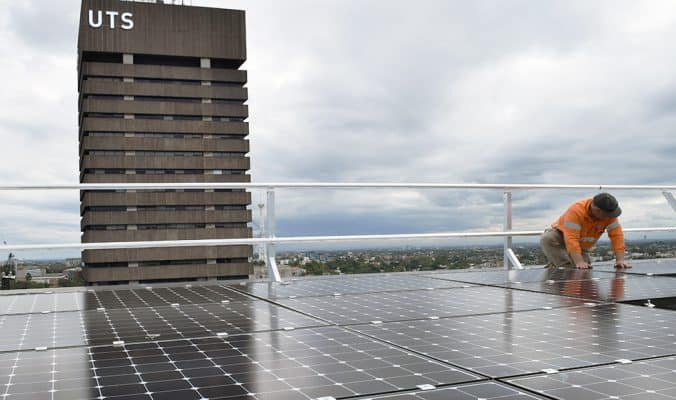UTS Solar and renewables – the University of Technology Sydney have asked for proposals from large-scale renewable energy projects as they’re hoping to enter into a Power Purchasing Agreement (PPA) in order to fully offset the energy usage of buildings developed under UTS’ $1.3b City Campus Master Plan program.
UTS Solar – City Campus Master Plan

According to the UTS Newsroom, their goal is for renewable energy purchasing to meet 40-50% of the university’s entire needs by 2019. The energy requirements of the newest buildings at UTS will be fully offset and are a great representation of UTS’s ongoing commitment to sustainable operation.
UTS Deputy Vice Chancellor (Resources) Patrick Woods was quoted as saying, “UTS has a strong record of innovation in energy, with Australia’s first offsite solar corporate PPA with Singleton Solar farm, followed by another in Orange NSW and Australia’s first district cooling connection contract with Brookfield Central Park.”
According to Vice Chancellor Woods, “Corporate renewable energy PPAs are a method for institutions to secure competitive and firm energy prices whilst contributing to our sustainability objectives. They’ve been particularly successful in the US for corporations seeking the benefits of renewable energy. The ACT and Victorian Governments, and Telstra have had similar success in Australia.” Woods noted that there are already a number of projects with DA, ready to break ground, but need a PPA for the generation so they can secure financing – so hopefully one of them can pair up with UTS and get started!
UTS could purchase large-scale generation certificates (LGCs) and electricity for a 10-15 year period – and according to the tender, they plan on implementing the PPA within the next two years. As such renewable technology projects of suitable scale and in the correct phase (i.e. already under development/with development approval and awaiting a PPA) are being sought to tender.
University solar farms are far from a new thing, with the University of Southern Queensland’s innovative solar carpark winning awards and saving USQ over $1m so far. Although UTS isn’t actually installing solar in this circumstance, it’s still fantastic to see them tendering for a PPA – they do have a lot of solar panels on the premises and support many different renewable endeavours – such as the Solar Stand and their Centre for Clean Energy Technology.


